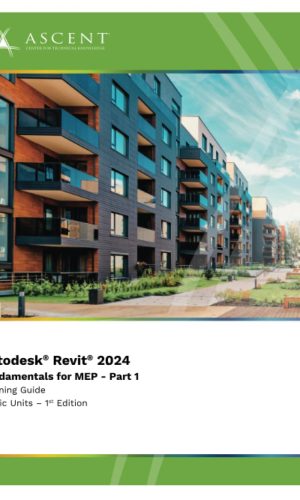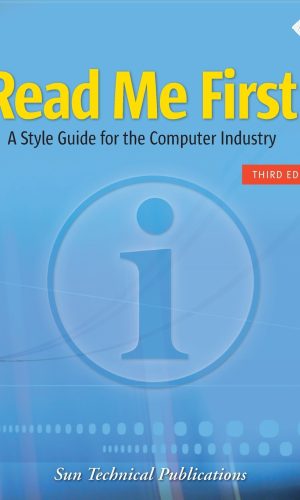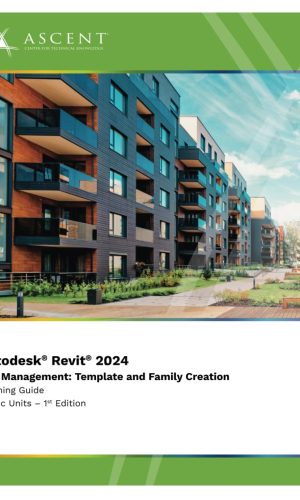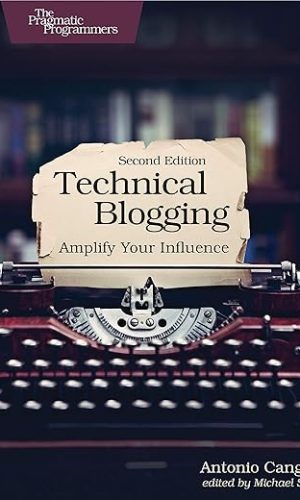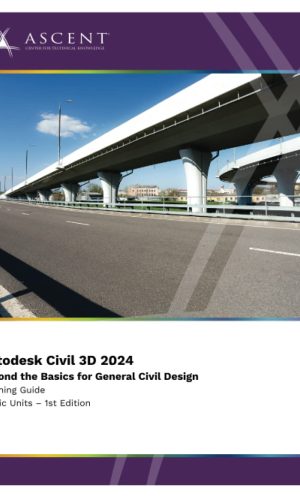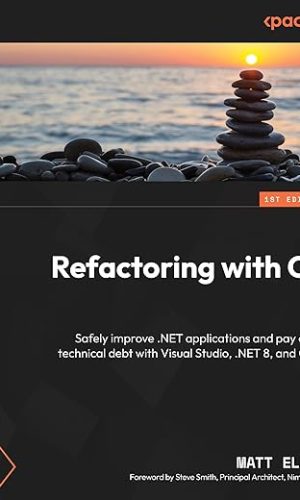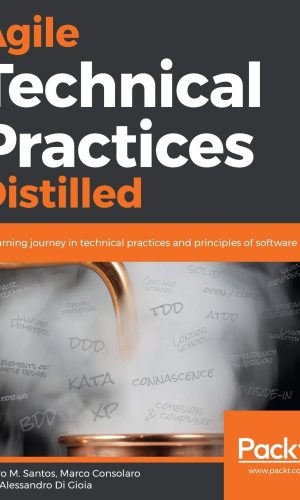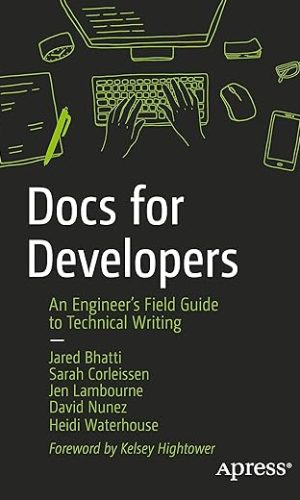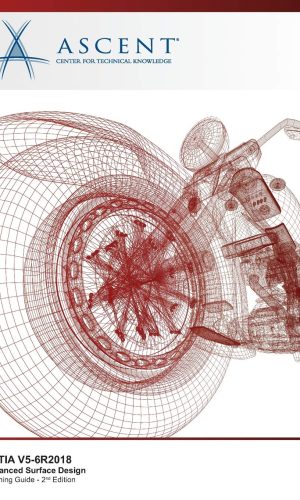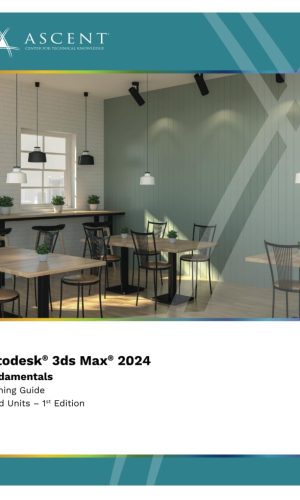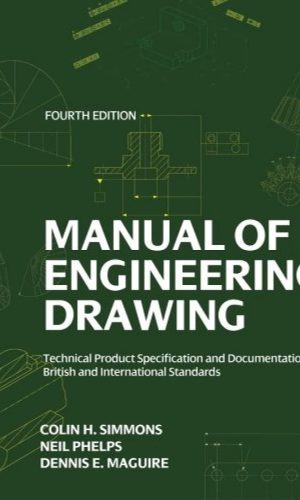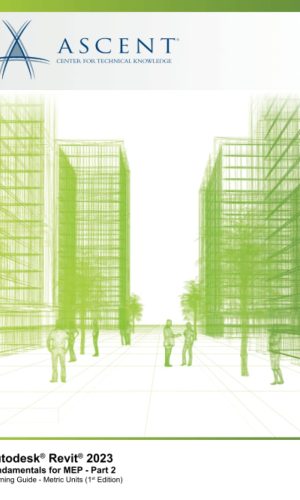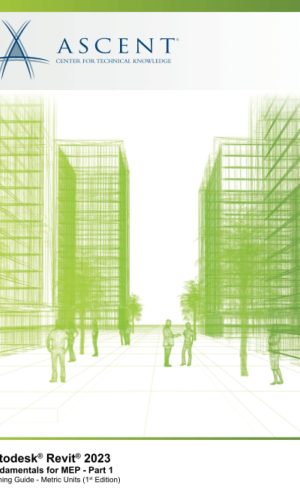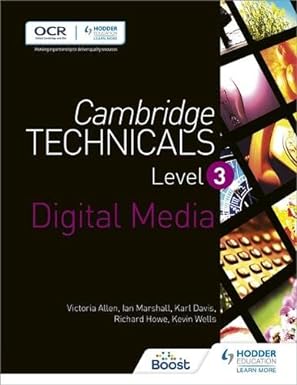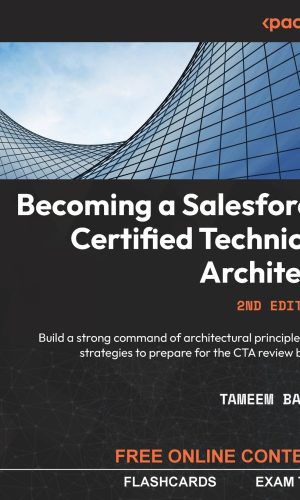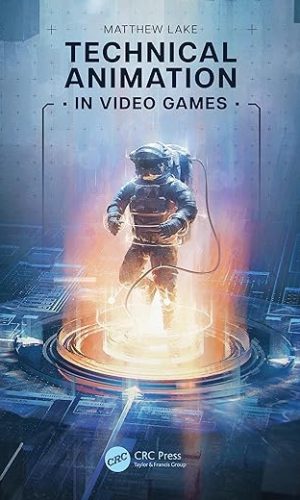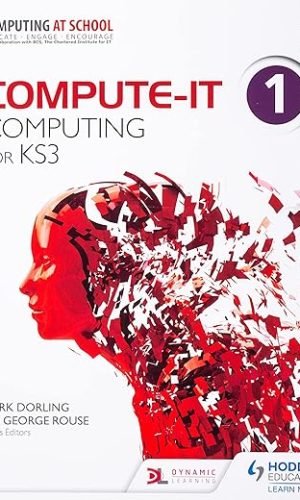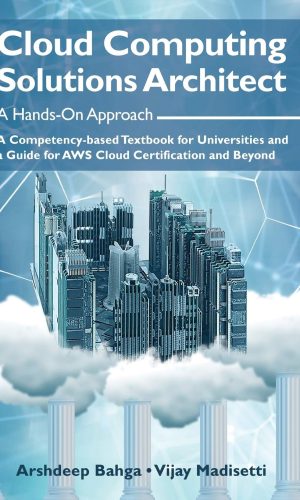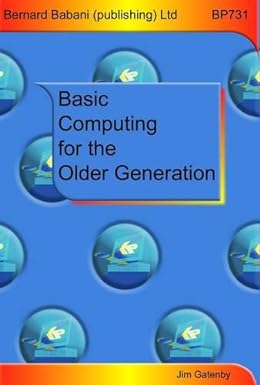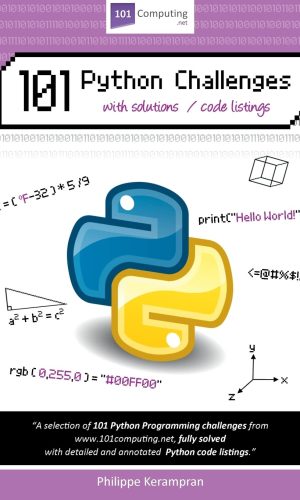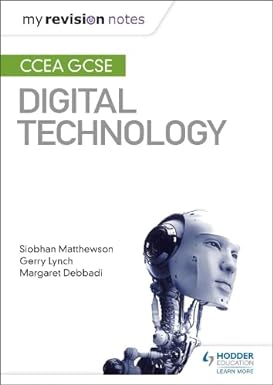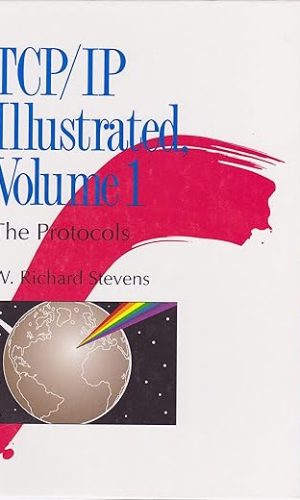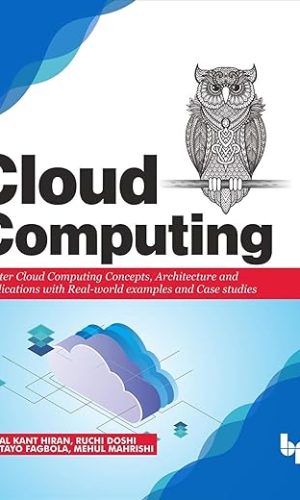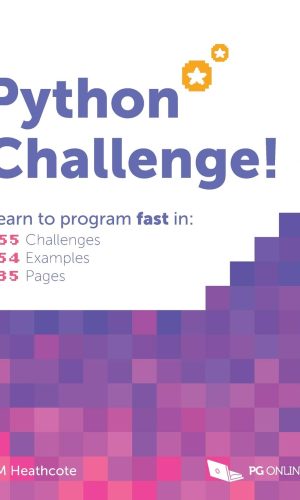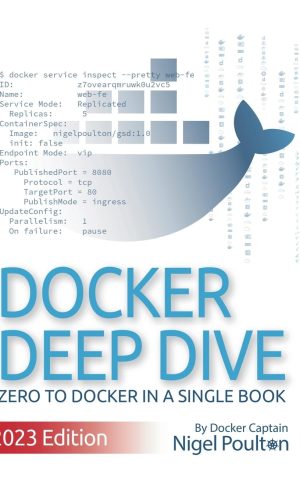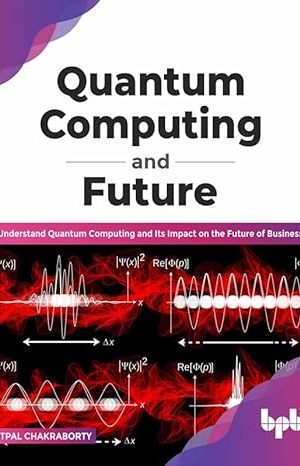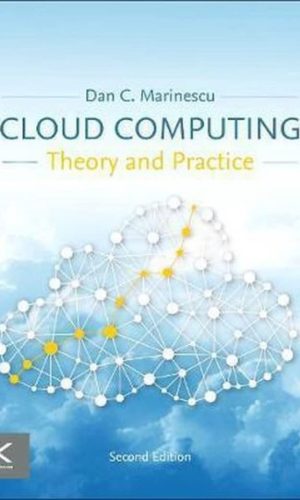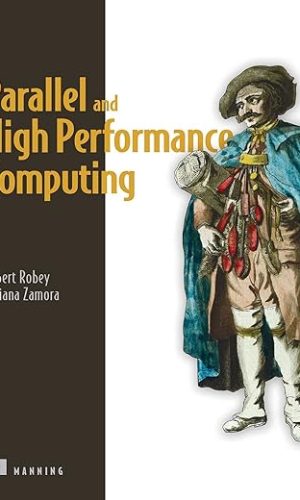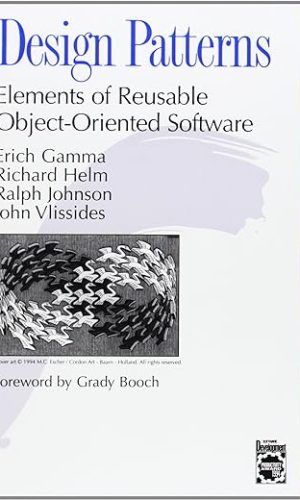-
Autodesk Revit 2024: Fundamentals for MEP – Part 1 (Metric Units)
Note: This book is continued in Autodesk® Revit® 2024: Fundamentals for MEP – Part 2. Both books are required to complete this guide.
To take full advantage of Building Information Modeling, the Autodesk® Revit® 2024: Fundamentals for MEP guide (Part 1 and Part 2) has been designed to teach the concepts and principles of creating 3D parametric models of MEP systems from engineering design through construction documentation.
This guide is intended to introduce users to the user interface and the basic HVAC, electrical, and piping/plumbing components that make Autodesk Revit a powerful and flexible engineering modeling tool. The guide will also familiarize users with the tools required to create, document, and print the parametric model. The examples and practices are designed to take users through the basics of a full MEP project from linking in an architectural model to construction documents.
Topics Covered in Part 1
- Introduction to the Autodesk Revit software, including navigating the Revit interface.
- Starting an MEP project based on a linked architectural model and creating levels and grids as datum elements for the model.
- Understanding the project browser and working with views.
- Understanding Revit families and components.
- Working with the basic sketching and modifying tools.
- Copying and monitoring elements and coordinating linked models.
- Creating spaces so that you can analyze heating and cooling loads.
- Connecting and testing basic systems.
- Creating pipe systems with plumbing fixtures and pipes.
- Creating duct systems with air terminals, mechanical equipment, and ducts.
- Creating advanced HVAC and plumbing systems with automatic duct and piping layouts.
- Creating electrical circuits with electrical equipment, devices, and light fixtures and adding cable trays and conduits.
Prerequisites
- Access to the 2024.0 version of the software, to ensure compatibility with this guide. Future software updates that are released by Autodesk may include changes that are not reflected in this guide. The practices and files included with this guide might not be compatible with prior versions (e.g., 2023).
- This guide introduces the fundamental skills you need to learn the Autodesk Revit MEP software. It is highly recommended that users have experience and knowledge in MEP engineering and its terminology.
- It is recommended that users have a standard three-button mouse to successfully complete the practices in this guide.
Read more
£47.20 -
Technical Drawing GCE and CSE
Exam Board: any
Level & Subject: GCSE and A-levelStep-by-step practical guide to the basics of technical drawing.
This covers all of the basic drawing techniques, rules and styles. It builds up the level of difficulty gradually through simple practice drawings. Contents include standard symbols, isometric, oblique, orthographic, thick/thin lines, dimensioning and the creation of objects using geometry. The skills developed will cover you for the majority of technical drawing areas for engineering, construction, architectural or other design fields.
Read more
£27.50 -
Read Me First! A Style Guide for the Computer Industry, Third Edition
The definitive reference for technical writers, editors, and documentation managers, Read Me First! A Style Guide for the Computer Industry, Third Edition,has been revised and updated to cover everything from creating screencasts and referencing web sites to writing for wikis.This award-winning guide to creating clear, consistent, and easy-to-understand documentation covers everything from grammar and writing style to typographic and legal guidelines. The authors, who are senior editors and writers at Sun Microsystems, share their extensive experience and provide practical tips and recommendations, including guidance on hiring writers, working with illustrators, managing schedules and workflow, and more.
The third edition of Read Me First features new chapters on:
- Writing for wikis and encouraging wiki collaboration
- Creating screencasts, using screencast terminology, and guidelines for writing narration
- Creating alternative text for nontext elements such as screen captures, multimedia content, illustrations, and diagrams
It also includes new tables for symbol name conventions, for common anthropomorphisms, and for common idioms and colloquialisms. An updated and expanded recommended reading list suggests additional resources.
Read more
£18.00 -
Autodesk Revit 2024 BIM Management: Template and Family Creation (Metric Units): 10
Building Information Modeling (BIM) is an approach to the entire building life cycle. Autodesk® Revit® is a powerful BIM program for architecture, MEP, and structure that supports the ability to coordinate, update, and share design data with team members throughout the design construction and management phases of a building’s life. A key component in managing the BIM process is to establish a company foundation for different types of projects by creating standard templates and custom family elements. Having this in place makes the process of any new project flow smoothly and efficiently.
The objective of the Autodesk® Revit® 2024 BIM Management: Template and Family Creation guide is to enable users who have worked with the software to expand their knowledge in setting up office standards with templates that include annotation styles, preset views, sheets, and schedules, as well as creating custom system, in-place, and component families.
This guide contains practices that are specific to each discipline.
Topics Covered
- Create custom templates with annotation styles, title blocks, and custom element types.
- Create schedules, including material takeoff schedules with formulas.
- Create custom wall, roof, and floor types, as well as MEP system families.
- Set up a component family file with a parametric framework.
- Create family geometry.
- Create family types.
- Modify the visibility of components and incorporate additional family items such as controls, MEP connectors, and nested components.
- Create specific families, including in-place families, profiles, annotations, and parameters.
This guide also contains discipline-specific practices for families, including doors, windows, railings, pipe fittings, light fixtures, gusset plates, and built-up columns.
Prerequisites
- Access to the 2024.0 version of the software, to ensure compatibility with this guide. Future software updates that are released by Autodesk may include changes that are not reflected in this guide. The practices and files included with this guide might not be compatible with prior versions (e.g., 2023).
- You should be comfortable with the fundamentals of the Autodesk Revit software, as found in the Autodesk Revit 2024: Fundamentals for Architecture, Autodesk Revit 2024: Fundamentals for Structure, or Autodesk Revit 2024: Fundamentals for MEP guides. Knowledge of basic techniques is assumed, such as creating standard elements, copying and moving elements, and creating and working with views. Information on Collaboration Tools, Conceptual Design, and Site Planning and Design are covered in other guides.
Read more
£62.50 -
Technical Blogging 2e: Amplify Your Influence
Successful technical blogging is not easy but it’s also not magic. Use these techniques to attract and keep an audience of loyal, regular readers. Leverage this popularity to reach your goals and amplify your influence in your field. Get more more users for your startup or open source project, or simply find an outlet to share your expertise. This book is your blueprint, with step-by-step instructions that leave no stone unturned. Plan, create, maintain, and promote a successful blog that will have remarkable effects on your career or business. Successful people often get recognition by teaching what they know. Blogging is a reliable path to do that, while gaining influence in the process. The problem is getting it right. Far too often professionals start a blog with big hopes, only to quickly give up because they don’t get speedy results. This book will spare you that fate, by outlining a careful plan of action. A plan that will bring amazing benefits to your career, new job possibilities, as well as publishing, speaking, and consulting opportunities. And if you are blogging for business, you’ll attract new customers, partners, and outstanding employees. Understand what blogging is and how it can improve your professional (and personal) life. Devise a plan for your new or existing blog. Create remarkable content that ranks well in Google and is shared by readers. Beat procrastination by employing proven time-management techniques that make you an efficient and effective blogger. Promote your blog by mastering on-page and off-page SEO, as well as social media promotion, without compromising your ethics. Analyze your traffic to understand your audience and measure growth. Build a community around your blog and make the best of your newfound popularity, by maximizing its benefits for your career, business, or simply for extra income. Create and maintain a successful technical blog that will amplify your impact, influence, and reach by following Antonio’s step-by-step plan.Read more
£26.80£36.60Technical Blogging 2e: Amplify Your Influence
£26.80£36.60 -
Autodesk Civil 3D 2024: Beyond the Basics for General Civil Design (Metric Units)
The Autodesk® Civil 3D® 2024: Beyond the Basics guide is designed for civil engineers and surveyors who want to continue exploring the Autodesk Civil 3D software’s interactive, dynamic design functionality. It continues on from the topics covered in the Autodesk Civil 3D 2024: Essentials guide and covers more sophisticated techniques that extend your mastery of the software. This guide looks at configuring the software, Civil 3D’s styles and settings, alternative ways to create surfaces, and creating parcels. It also goes beyond the basics for more advanced corridor and pipe network design. Finally, it covers customizing sheet set properties, performing quantity takeoffs, and visualization.
Topics Covered
- Create a Civil 3D template drawing.
- Create and manage styles and label styles.
- Create data shortcuts.
- Create and edit parcels and print parcel reports.
- Create, edit, view, and analyze surfaces.
- Create assemblies, corridors, and roundabouts.
- Add appurtenances to pressure pipe networks.
- Customize sheet set properties.
- Perform quantity takeoff and volume calculations.
* For professionals looking to learn only the survey functionality, consider the Civil 3D Essentials for Surveyors guide.
Prerequisites
- Access to the 2024.0 version of the software, to ensure compatibility with this guide. Future software updates that are released by Autodesk may include changes that are not reflected in this guide. The practices and files included with this guide might not be compatible with prior versions (e.g., 2023).
- Knowledge of Civil 3D basics as taught in Autodesk Civil 3D: Essentials, or equivalent experience.
- Experience with AutoCAD® or AutoCAD-based products and a sound understanding and knowledge of civil engineering terminology.
Read more
£60.30 -
Refactoring with C#: Safely improve .NET applications and pay down technical debt with Visual Studio, .NET 8, and C# 12
Learn how to improve the maintainability of C# code using modern tools and techniques to resolve technical debt while working safely and efficiently with legacy code
Key Features
- Apply a wide range of refactoring techniques using the latest tools and features of C#
- Discover ways to safely improve your code using tests, Roslyn analyzers, and AI assistance
- Find ways of communicating technical debt and improving your code in agile and enterprise settings
- Purchase of the print or Kindle book includes a free PDF eBook
Book Description
Software projects start as brand-new greenfield projects, but invariably become muddied in technical debt far sooner than you’d expect. In Refactoring with C#, you’ll explore what technical debt is and how it arises before walking through the process of safely refactoring C# code using modern tooling in Visual Studio and more recent C# language features using C# 12 and .NET 8. This book will guide you through the process of refactoring safely through advanced unit testing with XUnit and libraries like Moq, Snapper, and Scientist .NET. You’ll explore maintainable code through SOLID principles and defensive coding techniques made possible in newer versions of C#. You’ll also find out how to run code analysis and write custom Roslyn analyzers to detect and resolve issues unique to your code.
The nature of coding is changing, and you’ll explore how to use AI with the GitHub Copilot Chat to refactor, test, document, and generate code before ending with a discussion about communicating technical debt to leadership and getting organizational buy-in to refactor your code in enterprise organizations and in agile teams.
By the end of this book, you’ll understand the nature of refactoring and see how you can safely, effectively, and repeatably pay down the technical debt in your application while adding value to your business.
What you will learn
- Understand technical debt, its causes and effects, and ways to prevent it
- Explore different ways of refactoring classes, methods, and lines of code
- Discover how to write effective unit tests supported by libraries such as Moq
- Understand SOLID principles and factors that lead to maintainable code
- Use AI to analyze, improve, and test code with the GitHub Copilot Chat
- Apply code analysis and custom Roslyn analyzers to ensure that code stays clean
- Communicate tech debt and code standards successfully in agile teams
Who this book is for
This book is for any developer familiar with C# who wants to improve the code they work with on a day-to-day basis. While this book will be most beneficial to new developers with only a year or two of experience, even senior engineers and engineering managers can make the most of this book by exploring not just the process of refactoring, but advanced techniques with libraries like Moq, Snapper, Scientist .NET, and writing custom Roslyn analyzers.
Table of Contents
- Technical Debt, Code Smells, and Refactoring
- Introduction to Refactoring
- Method-Level Refactorings
- Class-Level Refactorings
- Code-Level Refactorings
- Unit Testing
- Test Driven Development
- Avoiding Code Anti-Patterns with SOLID
- Advanced Unit Testing
- Defensive Coding Techniques
- AI-Assisted Refactoring with GitHub Copilot
- Code Analysis in Visual Studio
- Creating a Roslyn Analyzer
- Refactoring Code with Roslyn Analyzers
- Communicating Technical Debt
- Adopting Code Standards
- Agile Refactoring
Read more
£37.00 -
Developing Quality Technical Information: A Handbook for Writers and Editors (IBM Press)
The #1 Guide to Excellence in Technical Communication—Fully Updated for Embedded Assistance, Mobile, Search, Multimedia, and More
Direct from IBM’s own content design experts, this guide shows you how to design product interfaces and technical information that always place users front and center. This edition has been fully revised to help you consistently deliver the right content at the right time.
You’ll master today’s best practices to apply nine essential characteristics of high-quality technical information: accuracy, clarity, completeness, concreteness, organization, retrievability, style, task orientation, and visual effectiveness.
Coverage Includes
- Advocating for users throughout the entire product development process
- Delivering information in an ordered manner by following progressive disclosure techniques
- Optimizing content so that users can find it from anywhere
- Streamlining information for mobile delivery
- Helping users right where they are
Whether you’re a writer, editor, information architect, user experience professional, or reviewer, this book shows you how to create great technical information, from the product design to the user interface, topics, and other media.
- Thoroughly revised and updated
- Extensive new coverage of self-documenting interfaces and embedded assistance
- Updated practical guidelines and checklists
- Hundreds of new examples
Read more
£11.30 -
Autodesk Revit 2023: Fundamentals for Structure (Metric Units): Autodesk Authorized Publisher
To take full advantage of Building Information Modeling, the Autodesk® Revit® 2023: Fundamentals for Structure guide has been designed to teach the concepts and principles of creating 3D parametric models of structural buildings from engineering design through construction documentation.
This guide is intended to introduce you to the user interface and the basic building components of the software that makes Autodesk® Revit® a powerful and flexible structural modeling tool. The goal is to familiarize you with the tools required to create, modify, analyze, and document a parametric model. The examples and practices are designed to take you through the basics of a full structural project, from linking in an architectural model to construction documents.
Topics Covered
- Introduction to the Autodesk Revit software.
- Navigating the Revit workspace and interface.
- Working with the basic sketching and modifying tools.
- Creating levels and grids as datum elements for the model.
- Understanding Revit families and components.
- Understanding the project browser and working with views.
- Starting a structural project based on a linked architectural model.
- Creating a 3D building model.
- Adding structural columns and walls.
- Adding foundations and structural slabs.
- Structural reinforcement.
- Beams, trusses, and framing systems.
- Analytical models and placing loads.
- Project practices to reinforce learning.
- Setting up sheets for plotting with text, dimensions, details, tags, and schedules.
- Creating details.
Prerequisites
- Access to the 2023.0 version of the software, to ensure compatibility with this guide. Future software updates that are released by Autodesk may include changes that are not reflected in this guide. The practices and files included with this guide might not be compatible with prior versions (e.g., 2022).
- This guide introduces the fundamental skills in learning how to use the Autodesk Revit software, with a focus on the structural tools. It is highly recommended that students have experience and knowledge in structural engineering and its terminology.
Read more
£83.90 -
Agile Technical Practices Distilled: A learning journey in technical practices and principles of software design
Delve deep into the various technical practices, principles, and values of Agile.
Key Features
- Discover the essence of Agile software development and the key principles of software design
- Explore the fundamental practices of Agile working, including test-driven development (TDD), refactoring, pair programming, and continuous integration
- Learn and apply the four elements of simple design
Book Description
The number of popular technical practices has grown exponentially in the last few years. Learning the common fundamental software development practices can help you become a better programmer. This book uses the term Agile as a wide umbrella and covers Agile principles and practices, as well as most methodologies associated with it.
You’ll begin by discovering how driver-navigator, chess clock, and other techniques used in the pair programming approach introduce discipline while writing code. You’ll then learn to safely change the design of your code using refactoring. While learning these techniques, you’ll also explore various best practices to write efficient tests. The concluding chapters of the book delve deep into the SOLID principles – the five design principles that you can use to make your software more understandable, flexible and maintainable.
By the end of the book, you will have discovered new ideas for improving your software design skills, the relationship within your team, and the way your business works.
What you will learn
- Learn the red, green, refactor cycle of classic TDD and practice the best habits such as the rule of 3, triangulation, object calisthenics, and more
- Refactor using parallel change and improve legacy code with characterization tests, approval tests, and Golden Master
- Use code smells as feedback to improve your design
- Learn the double cycle of ATDD and the outside-in mindset using mocks and stubs correctly in your tests
- Understand how Coupling, Cohesion, Connascence, SOLID principles, and code smells are all related
- Improve the understanding of your business domain using BDD and other principles for “doing the right thing, not only the thing right”
Who this book is for
This book is designed for software developers looking to improve their technical practices. Software coaches may also find it helpful as a teaching reference manual. This is not a beginner’s book on how to program. You must be comfortable with at least one programming language and must be able to write unit tests using any unit testing framework.
Table of Contents
- Pair Programming
- Classic TDD I – Test-Driven Development
- Classic TDD II
- Classic TDD III – Transformation Priority Premise
- Design I – Object Calisthenics
- Design II – Refactoring
- Design III – Code Smells
- Test Doubles
- Testing Legacy Code
- Design Patterns
- Cohesion and Coupling
- Solid Principles ++
- Design VII – Connascence
- The Four Elements of Simple Design
- Conclusion
- Outside-In Development
- Behavior-Driven Development
- Understand the Business
- The Story of Team C
- Conclusion
- The 12 Agile Principles
- PopcornFlow by Claudio Perrone
- EventStorming by Alberto Brandolini
- License: CyberDojo
- Sample Solutions
Read more
£21.80 -
CATIA V5-6R2018: Advanced Surface Design
The CATIA V5-6R2018: Advanced Surface Design learning guide expands on the knowledge learned in the CATIA V5-6R2018: Introduction to Surface Design learning guide by covering advanced curve and surface topics found in the Generative Shape Design Workbench. Topics include: advanced curve construction, advanced swept, blend and offset surface construction, complex fillet creation, and the use of laws. Curve and surface analysis are introduced to validate the student’s geometry. Tools and methods for rebuilding geometry are also discussed. As with the CATIA V5-6R2018: Introduction to Surface Design learning guide, meeting model specifications (such as continuity settings) remains forefront in introducing tools and methodologies.
Topics Covered
- Surface Design Overview
- Advanced Wireframe Elements
- Curve Analysis and Repair
- Swept Surfaces
- Blend Surfaces
- Adaptive Sweep
- Laws
- Advanced Surface Fillets
- Alternative Filleting Methods
- Duplication Tools
- Knowledge Templates
- Surface Analysis and Repair
- Offset Surfaces
- Project Exercises
Prerequisites
- Access to the V5-6R2018 version of the software, to ensure compatibility with this guide. Future software updates that are released by Dassault Systèmes may include changes that are not reflected in this guide. The practices and files included with this guide might not be compatible with prior versions (i.e., V5-6R2017).
- Completion of the CATIA V5-6R2018: Introduction to Surface Design course is recommended.
Read more
£72.00 -
Autodesk Revit 2024: Fundamentals for Structure (Metric Units)
To take full advantage of Building Information Modeling, the Autodesk® Revit® 2024: Fundamentals for Structure guide has been designed to teach the concepts and principles of creating 3D parametric models of structural buildings from engineering design through construction documentation.
This guide is intended to introduce you to the user interface and the basic building components of the software that makes Autodesk® Revit® a powerful and flexible structural modeling tool. The goal is to familiarize you with the tools required to create, modify, analyze, and document a parametric model. The examples and practices are designed to take you through the basics of a full structural project, from linking in an architectural model to construction documents.
Topics Covered
- Introduction to the Autodesk Revit software, including navigating the Revit interface
- Starting a structural project based on a linked architectural model and creating levels and grids as datum elements for the model
- Understanding the project browser and working with views
- Understanding Revit families and components
- Working with the basic sketching and modifying tools
- Adding structural columns to a project and copying and monitoring elements from linked models
- Adding foundations and footings
- Creating structural framing, including beams, trusses, and framing systems
- Creating slabs for foundations, structural floors, and roofs
- Creating structural reinforcement, including placing rebar and adding fabric reinforcement
- Setting up sheets and placing and modifying views on sheets
- Working with dimensions, text, annotations, and legends
- Adding tags and working with schedules
- Setting up detail views and adding detail components
Prerequisites
- Access to the 2024.0 version of the software, to ensure compatibility with this guide. Future software updates that are released by Autodesk may include changes that are not reflected in this guide. The practices and files included with this guide might not be compatible with prior versions (e.g., 2023).
- This guide introduces the fundamental skills in learning how to use the Autodesk Revit software, with a focus on the structural tools. It is highly recommended that students have experience and knowledge in structural engineering and its terminology.
Read more
£82.90 -
Autodesk 3ds Max 2024: Fundamentals (Mixed Units)
The Autodesk® 3ds Max® 2024: Fundamentals guide provides a thorough introduction to the Autodesk 3ds Max 2024 software that will help new users make the most of this sophisticated application, as well as broaden the horizons of existing, self-taught users. The guide instructs you on how to effectively use the software interface and navigate through the scenes. It explores the creation of 3D objects and how to bring in objects from other software such as Autodesk Revit, AutoCAD, and Civil 3D. Additionally, it teaches you to prepare the scenes for renderings by adding materials, lights, and cameras. Finally, the guide covers an understanding of various renderers included with the software, as well as image creation and animation techniques.
The practices in this guide are primarily geared towards real-world tasks encountered by users of the Autodesk 3ds Max software in the Architecture, Interior Design, and Civil Engineering industries. Advanced topics such as character modeling, character animation, and rigging are not covered in this guide.
Topics Covered
- Autodesk 3ds Max interface and workflow
- Assembling files by importing, linking, or merging
- 3D modeling with primitives and 2D objects
- Using modifiers to create and modify 3D objects
- Materials and maps
- Autodesk 3ds Max lighting
- Working with cameras and exposure control
- Rendering using various renderers, such as Scanline, ART, and Arnold
- Animation for visualization
Prerequisites
- Access to the 2024.0 version of the software, to ensure compatibility with this guide. Future software updates that are released by Autodesk may include changes that are not reflected in this guide. The practices and files included with this guide might not be compatible with prior versions (e.g., 2023).
- Experience with 3D modeling is recommended.
Read more
£86.50 -
Manual of Engineering Drawing: Technical Product Specification and Documentation to British and International Standards
Now in its 4th edition, Manual of Engineering Drawing is a long-established guide for practicing and student engineers to producing engineering drawings and annotated 3D models that comply with the latest BSI and ISO standards of technical product specifications and documentation. This new edition has been updated in line with recent standard revisions and amendments, including the requirements of BS8888 2011 and related ISO standards. Ideal for international use, it includes a guide to the fundamental differences between the relevant ISO and ASME standards, as well as new information on legal aspects such as patents and copyright, and end-of-life design considerations. Equally applicable to CAD and manual drawing, the book includes the latest developments in 3D annotation and the specification of surface texture. Its broad scope also encompasses topics such as orthographic and pictorial projections, dimensional, geometrical and surface tolerancing, and the duality principle, along with numerous examples of electrical and hydraulic diagrams with symbols and applications of cams, bearings, welding and adhesives. Seen by many as an essential design reference, Manual of Engineering Drawing is an ideal companion for students studying vocational courses in technical product specification, undergraduates studying engineering or product design, and professional engineers beginning a career in design.Read more
£40.80 -
Autodesk Revit 2023: Fundamentals for MEP – Part 2 (Metric Units)
Note: This book is a continuation of Autodesk® Revit® 2023: Fundamentals for MEP – Part 1. Both books are required to complete this guide.
To take full advantage of Building Information Modeling, the Autodesk® Revit® 2023: Fundamentals for MEP guide has been designed to teach the concepts and principles of creating 3D parametric models of MEP systems from engineering design through construction documentation.
This guide is intended to introduce users to the user interface and the basic HVAC, electrical, and piping/plumbing components that make Autodesk Revit a powerful and flexible engineering modeling tool. The guide will also familiarize users with the tools required to create, document, and print the parametric model. The examples and practices are designed to take users through the basics of a full MEP project from linking in an architectural model to construction documents.
Topics Covered in Part 2
- Setting up sheets, and placing and modifying views on sheets.
- Working with dimensions, text, annotations, and legends.
- Adding tags and working with schedules.
- Setting up detail views and adding detail components.
Prerequisites
- Access to the 2023.0 version of the software, to ensure compatibility with this guide. Future software updates that are released by Autodesk may include changes that are not reflected in this guide. The practices and files included with this guide might not be compatible with prior versions (e.g., 2022).
- This guide introduces the fundamental skills you need to learn the Autodesk Revit MEP software. It is highly recommended that users have experience and knowledge in MEP engineering and its terminology.
- It is recommended that users have a standard three-button mouse to successfully complete the practices in this guide.
Read more
£35.90 -
Autodesk Revit 2023: Fundamentals for MEP – Part 1 (Metric Units)
Note: This book is continued in Autodesk® Revit® 2023: Fundamentals for MEP – Part 2. Both books are required to complete this guide.
To take full advantage of Building Information Modeling, the Autodesk® Revit® 2023: Fundamentals for MEP guide has been designed to teach the concepts and principles of creating 3D parametric models of MEP systems from engineering design through construction documentation.
This guide is intended to introduce users to the user interface and the basic HVAC, electrical, and piping/plumbing components that make Autodesk Revit a powerful and flexible engineering modeling tool. The guide will also familiarize users with the tools required to create, document, and print the parametric model. The examples and practices are designed to take users through the basics of a full MEP project from linking in an architectural model to construction documents.
Topics Covered in Part 1
- Introduction to the Autodesk Revit software.
- Navigating the Revit workspace and interface.
- Working with the basic sketching and modifying tools.
- Creating levels and grids as datum elements for the model.
- Understanding Revit families and components.
- Understanding the project browser and working with views.
- Starting an MEP project based on a linked architectural model.
- Creating spaces and zones so that you can analyze heating and cooling loads.
- Creating HVAC networks with air terminals, mechanical equipment, ducts, and pipes.
- Creating plumbing networks with plumbing fixtures and pipes.
- Creating electrical circuits with electrical equipment, devices, and light fixtures and adding cable trays and conduits.
- Creating HVAC and plumbing systems with automatic duct and piping layouts.
- Testing duct, piping and electrical systems.
Prerequisites
- Access to the 2023.0 version of the software, to ensure compatibility with this guide. Future software updates that are released by Autodesk may include changes that are not reflected in this guide. The practices and files included with this guide might not be compatible with prior versions (e.g., 2022).
- This guide introduces the fundamental skills you need to learn the Autodesk Revit MEP software. It is highly recommended that users have experience and knowledge in MEP engineering and its terminology.
- It is recommended that users have a standard three-button mouse to successfully complete the practices in this guide.
Read more
£49.80 -
Technical Drawing with Engineering Graphics
This full-color text offers a clear, complete introduction and detailed reference for creating 3D models and 2D documentation drawings. Building on its reputation as a trusted reference, this edition expands on the role that 3D CAD databases now play in design and documentation. Superbly integrated illustrations, text, step-by-step instructions, and navigation make it easier than ever to master key skills and knowledge. Throughout, the authors demonstrate 3D and 2D drawing skills and CAD usage in real-world work practice in today’s leading disciplines. They combine strong technical detail, real-world examples, and current standards, materials, industries, and processes-all in a format that is efficient, colorful, and visual.
Features:- Splash Spread: Appealing chapter opener provides context and motivation.
- References and Web Links: Useful weblinks and standards provided upfront in each chapter.
- Understanding Section: Foundational introductions, tabbed for easy navigation, outline each topic’s importance, use, visualization tips, and theory.
- Detail Section: Detailed, well-tested explanations of drawing techniques, variations, and examples-organized into quick-read sections, numbered for easy reference.
- CAD at Work Section: Breakout pages offer tips on generating drawings from 2D or 3D models.
- Portfolio Section: Examples of finished drawings show how techniques are applied in the real world.
- Key Words: Italicized on first reference, summarized after each chapter.
- Chapter: Summaries and Review Questions: Efficiently reinforce learning.
- Exercises: Outstanding problem sets with updated exercises, including parts, assembly drawings from CAD models, sketching problems, and orthographic projections.
Read more
£80.70 -
Cambridge Technicals Level 3 Digital Media (Cambridge Technicals 2016)
Exam Board: Cambridge
Level: KS4
Subject: Digital Media
First Teaching: September 2016
First Exam: June 2018Support your teaching of the new Cambridge Technicals 2016 suite with Cambridge Technical Level 3 Digital Media, developed in partnership between OCR and Hodder Education; this textbook covers each specialist pathway and ensures your ability to deliver a flexible course that is both vocationally focused and academically thorough.
Cambridge Technical Level 3 Digital Media is matched exactly to the new specification and follows specialist pathways in digital content for interactive media, and moving image and audio production.
– Ensures effective teaching of each specialist pathway offered within the qualification.
– Focuses learning on the skills, knowledge and understanding demanded from employers and universities.
– Provides ideas and exercises for the application of practical skills and knowledge.
– Developed in partnership between Hodder Education and OCR, guaranteeing quality resources which match the specification perfectlyHodder Education have worked with OCR to make updates to our Cambridge Technicals textbooks to bring them more closely in line with the model assignment course requirements. We would like to let you know about a recent change to this textbook, updated pages which are now available free of charge as a PDF when you click on the ‘Amended Pages’ link on the left of this webpage.
Read more
£26.20£28.50 -
Becoming a Salesforce Certified Technical Architect: Build a strong command of architectural principles and strategies to prepare for the CTA review board
Gain practical experience designing and building high-performance, secure, and scalable Salesforce solutions using real-world scenarios.
Purchase of the book unlocks access to web-based exam prep resources like flashcards and a free eBook PDF.
Key Features
- Master each knowledge domain by applying key concepts to a real-world scenario
- Put all the skills covered in the book into action with two full mock scenarios
- Gain access to additional online assets including flashcards and exam tips
Book Description
This book is a complete guide to learning essential architectural concepts that’ll enable you to deliver secure, high-performant Salesforce solutions and pass the Salesforce CTA review board exam with confidence. This second edition comes with updated content, additional supporting material such as cheat sheets, and detailed practical examples, and helps you learn key soft skills to craft a winning presentation.
You’ll begin by reviewing vital architectural concepts needed to create a scalable end-to-end Salesforce solution. Next, you’ll find out how to identify requirements and break down a problem into smaller, more solvable parts. As you advance, you’ll gain practical experience in managing design decisions and defending them using real-world scenarios. The book also helps familiarize you with the correct methodology to structure your solution presentation and the necessary supporting artifacts. Finally, you’ll practice providing solutions for two full hypothetical scenarios and structuring your playback step by step.
By the end of this Salesforce book, you’ll be able to design a highly scalable Salesforce solution and create suitable material to comfortably explain the end-to-end solution to the CTA review board and potentially your customer, and have a higher chance of passing.
What you will learn
- Explore core architectural concepts essential for any Salesforce architect
- Understand Salesforce knowledge domains using practical examples
- Practice creating solutions using scenarios focusing on particular knowledge domains
- Discover key artifacts needed to document and explain an end-to-end solution
- Apply data life cycle management effectively in the Salesforce ecosystem
- Design appropriate enterprise integration interfaces to build your connected solution
- Know what to expect on the day of the review board along with valuable tips and tricks
Who this book is for
This book is for Salesforce architects who want to design secure, performant, and scalable technical solutions for their organizations and ultimately become Salesforce Certified Technical Architects. A solid understanding of the Salesforce platform is required, ideally combined with three to five years of practical experience as an application architect, system architect, enterprise architect, or solution architect.
Table of Contents
- Starting Your Journey as a CTA
- Core Architectural Concepts: Data Life Cycle
- Core Architectural Concepts: Integration and Cryptography
- Core Architectural Concepts: Identity and Access Management
- Developing a Scalable System Architecture
- Formulating a Secure Architecture in Salesforce
- Designing a Scalable Salesforce Data Architecture
- Creating a Lean Solution Architecture
- Forging an Integrated Solution
- Development Life Cycle and Deployment Planning
- Communicating and Socializing Your Solution
- Practice the Review Board: First Mock
- Present and Defend: First Mock
- Practice the Review Board: Second Mock
- Present and Defend: Second Mock
- Appendix: Tips and Tricks, and the Way Forward
Read more
£50.30 -
Technical Animation in Video Games
This book provides a comprehensive overview of video game technical animation, covering the next generation pipelines that industry developers utilise to create their games. It covers the technical animation workflow from start to finish, looking at both software and hardware, as well as the industry standard processes that all technical animators need to know.
Written to be an accessible technical animation resource, this book combines easy-to-understand principles with educational use cases on how to combine the principles and tools taught within. Example test scripts, animation files, and rig assets are provided as tangible examples that can be modified and taken apart to deepen your understanding. It covers the end-to-end pipeline of technical animation, from the very first steps of placing joints in Autodesk’s Maya to breathe life into your static characters, through tools and automation development, all the way to Unreal Engine 5 integration and optimisation.
Additional resources are available on the book’s GitHub repository. From this resource, you will find example files for Maya and Python scripts that will help with your own work and demonstrations featured throughout this book.
This book is essential reading for early-career game technical animators as well as those studying game animation courses. It will also appeal to technical animators working in the film industry.
Read more
£41.20£42.70Technical Animation in Video Games
£41.20£42.70 -
Compute-IT: Student’s Book 1 – Computing for KS3
Compute-IT will help you deliver innovative lessons for the new Key Stage 3 Computing curriculum with confidence, using resources and meaningful assessment produced by expert educators. With Compute-IT you will be able to assess and record students’ attainment and monitor progression all the way through to Key Stage 4.
Developed by members of Computing at School, the national subject association for Computer Science, and a team of Master Teachers who deliver CPD through the Network of Excellence project funded by the Department for Education, Compute-IT provides a cohesive and supportive learning package structured around the key strands of Computing.
Creative and flexible in its approach, Compute-IT makes Computing for Key Stage 3 easy to teach, and fun and meaningful to learn, so you can:
Follow well-structured and finely paced lessons along a variety of suggested routes through Key Stage 3
Deliver engaging and interesting lessons using a range of files and tutorials provided for a range of different programming languages
Ensure progression throughout Key Stage 3 with meaningful tasks underpinned by unparalleled teacher and student support
Assess students’ work with confidence, using ready-prepared formative and summative tasks that are mapped to meaningful learning outcomes and statements in the new Programme of Study
Creative and flexible in its approach, Compute-IT makes Computing for Key Stage 3 easy to teach, and fun and meaningful to learn.
This is the first title in the Compute-IT course, which comprises three Student’s Books, three Teacher Packs and a range of digital teaching and learning resources delivered through Dynamic Learning.
Read more
£20.00 -
Cloud Computing Solutions Architect: A Hands-On Approach: A Competency-based Textbook for Universities and a Guide for AWS Cloud Certification and Beyond
A recent industry report from Gartner points out that choices related to cloud computing at enterprises have changed from “if” to “how” to build, deploy, consume, manage, secure and integrate cloud services into their operations. The cloud solutions architect is the person who defines the enterprise cloud strategy from a technical point of view and must take responsibility for rolling out these cloud services.
Cloud computing is a transformative paradigm that enables scalable, convenient, on-demand access to a shared pool of configurable computing and networking resources, for efficiently delivering applications and services over the Internet. Amazon Web Services (AWS), a leading provider of cloud platforms and services, defines a cloud solutions architect as one who can provide solution plans for the best architectural practices for cloud applications, can design and deploy highly scalable and fault-tolerant services, can assist in lifting legacy applications and shifting them to the cloud, and can identify and plan for data entry and exit from the cloud platform, choose suitable cloud services based on data, compute, and security requirements. Further, the cloud solutions architect also ensures that enterprise offerings conform to sound principles, such as AWS Well-Architected Framework (WAF) for cloud applications and services.
We have written this textbook, as part of our expanding “A Hands-On Approach”™ series, to meet this need at colleges and universities. This book is written as a textbook for training the next generation of cloud solutions architects for educational programs at colleges and universities, and also accompanying cloud certification programs where students would be interested in obtaining valuable hands-on skills on actual cloud platforms to further develop their knowledge and competency base.
The typical reader is expected to have completed a couple of courses in programming using traditional high-level languages at the college level, and is either a senior or a beginning graduate student in one of the science, technology, engineering or mathematics (STEM) fields. The reader is provided the necessary guidance and knowledge to develop working code for real-world cloud computing applications. Concurrent development of practical applications that accompanies traditional instructional material within the book further enhances the learning process, in our opinion. Furthermore, an accompanying website for this book (http://hands-on-books-series.com) contains additional support for instruction and learning.
Read more
£16.90£66.50 -
Basic Computing for the Older Generation
Basic Computing for the Older GenerationRead more
£8.60£9.50Basic Computing for the Older Generation
£8.60£9.50 -
The Web before the Web: Putting the Hype into Hypertext
In the mid-1970s, the personal computer began to
completely revolutionise the world of information technology,
creating a unique opportunity for those of us in that industry to
invent a different type of computing experience.Over the next twenty years this innovative new world of personal
computing was constructed. New applications were being invented
for the first time – and were being widely welcomed.By the mid-90s, the basic applications of personal computing had
been determined, the internet and the World Wide Web had been
established, enabling what we now recognise as the environment
of modern communications and information publishing.This book describes these 20 years when today’s information
world was being invented for the first time; from the perspective
of the developers of online interactive documents, hypertext,
the technology on which the World Wide Web is based.The World Wide Web has now become the platform on
which the modern information world is built: communications,
publishing, commerce, and broadcasting are all enabled by this
revolutionary technology.The Web before the Web describes our part in pioneering hypertext,
the technology behind this phenomenon.Read more
£9.50 -
101 Python Challenges with Solutions / Code Listings
This selection of 101 Python programming challenges is targeted at both learners and educators who want to find a challenging and enthusing approach to develop their programming skills using Python. In this book you will find a fully working solution to each of the 101 challenges in the form of annotated Python code listings. We believe that being able to work on these challenges and reverse-engineer the given code will give you a fantastic opportunity to improve your Python skills while discovering new programing techniques. This selection of challenges from the 101computing.net blog will cover all of the essential skills used in procedural programming, focusing on the key programming constructs: sequencing, selection and iteration. The 101 challenges are organised into ten chapters to help you discover and practise using a range of programming strategies using a step by step approach.Read more
£20.00 -
Introducing Microsoft Quantum Computing for Developers: Using the Quantum Development Kit and Q#
Dive in with this hands-on introduction to quantum computing with the Microsoft Quantum Development Kit and Q# for software developers.
You may have heard about quantum computing, but what does it mean to you as a software developer? With many new developments, a resurgence in interest, and investment by some of the largest tech companies in the world to be the first to market with quantum programming (QP) hardware and platforms, it is no longer a tool in the distant future. Developers are at the forefront, now able to create applications that take advantage of QP through simulations. While the skill is of interest, for many developers, quantum computing and its implications still remains a mystery.
In this book, you will get up to speed exploring important quantum concepts and apply them in practice through writing actual quantum algorithms, using the Microsoft Quantum Development Kit. Theoretical knowledge about quantum physics, such as superposition and entanglement, will be used to explain quantum computing topics, including quantum gates, quantum circuits, and quantum algorithms. Finally, take a tour of the new Azure Quantum.
Use Q#, Microsoft’s new programming language, to target quantum hardware. You will select your supporting language of choice, either C# or Python, to begin writing your quantum applications. Combined with just enough theoretical preparation, you will learn how to get your computer ready to simulate basic quantum programs using Microsoft Visual Studio or Visual Studio Code and Q#.
What You Will Learn
- Get up to speed on the platform-independent quantum tool set using the Microsoft Quantum Development Kit simulator and Visual Studio Code or Microsoft Visual Studio
Know the basics of quantum mechanics required to start working on quantum computing
- Understand mathematical concepts such as complex numbers, trigonometry, and linear algebra
- Install the Microsoft Quantum Development Kit on a Windows or Linux PC with Visual Studio Code or Microsoft Visual Studio
Write quantum algorithms with the Microsoft Quantum Development Kit and Q#, supported by C# or Python
- Discover insights on important existing quantum algorithms such as Deutch, Deutch-Jozsa, and the fun CHSH-game
- Get introduced to quantum as a service using the Microsoft Azure Quantum preview cloud offering
Who This Book Is For
Developers who are interested in quantum computing, specifically those software developers who are planning on using quantum computers in the future. Basic imperative programming knowledge is useful to understand the syntax and structure found in the Q# programming language. Knowledge of Microsoft C# or Python is not required since these languages are only used to support the simulation of Q# on a classical computer.Read more
£32.80 -
My Revision Notes: CCEA GCSE Digital Technology
Exam board: CCEA
Level: GCSE
Subject: Digital Technology
First teaching: September 2017
First exams: Summer 2019Target success in CCEA GCSE Digital Technology, whichever route you choose, with our proven formula for effective, structured revision. Key coverage of the three examined units – Digital Technology, Digital Development Concepts and Digital Development Practice – is combined with practical tips to create a revision guide that students can rely on to review, strengthen and test their knowledge.
With My Revision Notes, every student can:Consolidate subject knowledge by working through clear and focused content coverage.
Test understanding and identify areas for improvement with a sample paper included within the book.
Improve exam technique through tips written by leading authors and develop an understanding of assessment requirements of the examined units.
Get exam ready with extra quick quizzes and answers to the practice questionsRead more
£10.40 -
TCP/IP Illustrated, Volume 1: The Protocols (Addison-Wesley Professional Computing Series)
For students writing applications that run over TCP/IP, or for those responsible for managing and maintaining a TCP/IP internet, this book’s innovative approach helps readers at all levels to truly understand how TCP/IP really works. Rather than just describing the protocols from an abstract, standards-related point of view-describing what the standards say the protocol suite should do-TCP/IP Illustrated, Volume 1 actually shows the protocols in action. Stevens also recognizes that readers deal with multiple TCP/IP implementations on heterogeneous platforms. Therefore, the examples in this book show how current, popular TCP/IP implementations operate-SunOS 4.1.3, Solaris 2.2, System V Release 4, BSD/386, AIX 3.2.2, and 4.4 BSD-and they relate these real-world implementations to the RFC standards.
Read more
£6.50 -
Tackling A Level Projects in Computer Science for OCR H446 – Step-by-step Essential Coursework A-Level Computing Project Guide NEA Non-exam Assessment A Level Computer Science…
Subject level: A Level Computer Science
Exam board: OCR
A clear, concise, step-by-step guide to your A Level Computer Science NEA project
Completing an A Level project is a huge undertaking for any student regardless of their competence in programming. The key to success and increasing results is to plan and write a strong report, evidencing what has been carried out.
This guide to Tackling A Level Projects in Computer Science is designed to give you clear and focused advice to help you maximise your mark potential when completing your OCR Computing coursework project.
Tailored for OCR, it will take you through all aspects of the project, from document setup, to each stage of the process. This guide will give you essential tips, examples and checklists to complete every stage before handing in a top project with pride and confidence.
This guide is suitable for use with any language or project idea being undertaken.
PG Online are multi-award-winning specialists in Computer Science with decades of teaching, examining and programming experience.
Features:
- Full breakdown and ‘how-to’ of everything you need to complete in the specification
- Checklist for each section of the project to ensure you’ve got everything in order
- Worked examples of sample project steps and solutions
- Examiners’ tips on what to do and what to avoid
- Clear layout with full-colour examples
- Comprehensive index
Read more
£10.50 -
Password Book A5: With alphabetical tabs, password log book. Small Size 6×9 in. Secure & Simplify Your Digital Life: A Compact Password Organizer with … Alphabetically Indexed…
Keep Your Online Life Organized with Our Premium Password Book.
Product Features:
-
Handy Size: At 6 x 9 inches, our Password Book fits perfectly in your bag or drawer, making it your ideal companion both at home and on the go.
- Ample Space: With 105 pages of high-quality white paper, there’s plenty of room to store over 415 passwords, neatly organized for easy access.
- Alphabetical Tabs: Effortlessly navigate through your accounts with our user-friendly, scrollable alphabetical tabs — no cutouts mean a sleek profile and enhanced durability.
- Secure and Private: A discreet black cover with minimalist design ensures your sensitive information stays confidential, blending seamlessly with your other books or documents.
Perfect For:
- Individuals who struggle to remember complex passwords.
- Anyone looking to declutter their digital life.
- A thoughtful and practical gift for friends and family who value security.
Functions and Benefits:
- Password Retrieval: Say goodbye to the frustration of forgotten passwords.
- Account Management: Keep track of multiple usernames and passwords across various websites.
- Information Backup: A physical copy protects against digital loss of data.
- Security Aid: Helps in maintaining strong, unique passwords for better security.
In today’s digital age, managing an ever-growing list of passwords can be daunting. Our Password Book is not just a tool; it’s a guardian of your digital doorway, ensuring you’re always just a flip away from the information you need.
Don’t wait for the next ‘Password Reset’ email. Take control of your online security today.
Click “Add to Cart” and join the ranks of organized, stress-free internet users!
Read more
£4.30 -
-
Microsoft Azure For Dummies
The must-have reference for Azure newcomers
As Microsoft’s Azure platform takes a larger stake in the cloud computing world, more tech pros need to know the ins-and-outs of this fast-growing platform. Microsoft Azure For Dummies is the essential guide for users who are new to the platform. Take your first steps into the world of Azure as you learn all about the core services―straight from a Microsoft expert. This book covers the Azure essentials you need to know, including building a virtual network on Azure, launching and scaling applications, migrating existing services, and keeping everything secure. In classic Dummies style, you’ll learn the fundamentals of Azure’s core services and―when you’re ready―how to move into more advanced services.
- Discover the basics of cloud computing with Microsoft Azure and learn what services you can access with Azure
- Build your cloud network with Azure and migrate an existing network to the platform
- Scale applications seamlessly and make sure your security is air-tight
Updated to included expanded information on data resources, machine learning, artificial intelligence, and collaboration, Microsoft Azure For Dummies, 2nd Edition answers the call for an entry-level, comprehensive guide that provides a simple-to-understand primer on core Azure services. It’s an invaluable resource for IT managers and others arriving at the platform for the first time.
Read more
£18.00Microsoft Azure For Dummies
£18.00 -
Cloud Computing
With the advent of internet, there is a complete paradigm shift in the manner we comprehend computing. Need to enable ubiquity, convenient and on-demand access to resources in highly scalable and resilient environments that can be remotely accessed, gave birth to the concept of Cloud computing. The acceptance is so rapid that the notion influences sophisticated innovations in academia, industry and research world-wide and hereby change the landscape of information technology as we thought of. Through this book, the authors tried to incorporate core principles and basic notion of cloud computing in a step-by-step manner and tried to emphasize on key concepts for clear and thorough insight into the subject.This book begins with the fundamentals of cloud computing, its service and deployment models, architecture, as well as applications and platforms. It presents some key enterprise strategies and models for the adoption of and migration to cloud. Privacy and security issues and challenges also form a major part of our discussion in the book as well as case studies of cloud computing adoption in Sub-Saharan Africa and India. The book concludes with a discussion of several advanced topics, such as Amazon Web Services (AWS), Open Nebulla, Microsoft Azure, Apache Hadoop and Google App Engine (GAE). What will you learnLearn about the Importance of Cloud Computing in Current Digital EraUnderstand the Core concepts and Principles of Cloud Computing with practical benefitsLearn about the Cloud Deployment models and Services Discover how Cloud Computing Architecture works Learn about the Load balancing approach and Mobile Cloud Computing (MCC)Learn about the Virtualization and Service-Oriented Architecture (SOA) conceptsLearn about the various Cloud Computing applications, Platforms and Security conceptsUnderstand the adoption Cloud Computing technology and strategies for migration to the cloudCase Studies for Cloud computing adoption – Sub-Saharan Africa and India.Read more
£5.90Cloud Computing
£5.90 -
Python Challenge- Learn to program fast in 155 challenges, 54 examples and 85 pages –K12, GCSE and KS3 Level ClearRevise Clear Revise by PG Online Computing Programming Coding…
Suitable for: Grade 6+ / AP / KS3 / GCSE Computer Science
Ages: 10+
Learn to program fast in 155 challenges, 54 examples and 85 pages
This handy little guide takes a ‘gamified’ approach to Python. With appealing visuals and colourful design throughout, it is aimed at supporting pupils, parents and everyone else interested in learning Python.
There’s no substitute for practice when it comes to learning a new skill!
Python syntax is simple to learn, but becoming an expert in writing programs to solve different kinds of problems takes a bit longer. That’s why this book has a short explanation of each new statement or technique, followed by one or more examples and then loads of practice challenges.
Some of the challenges will take you only a minute or two, using the Python Interactive window to try out new statements and get immediate results. As you get further into the book, you will be challenged to write programs to perform different kinds of tasks – for example to find the results of a calculation, write a program for a simplified cash machine, sort a list of items into alphabetical order, or to record data in a text file to be read, formatted, and printed.
The programming solutions to some challenges have been helpfully simplified for an inexperienced programmer to modify rather than to write from scratch. This builds your confidence in problem-solving. That’s why 35 challenges consist of partially written programs for you to complete.
PG Online are multi-award-winning education specialists with decades of teaching, examining and design experience.
Features:
- Helpful programming tips
- Coded solutions with answers given in the back of the book
- Starred challenges – Partially written programs for you to complete
- Handy, lightweight, book-bag size
- Quick reference syntax guide
- Free download pack of supporting Python challenges and solutions
Read more
£9.50 -
OCaml Scientific Computing: Functional Programming in Data Science and Artificial Intelligence (Undergraduate Topics in Computer Science)
This book is about the harmonious synthesis of functional programming and numerical computation. It shows how the expressiveness of OCaml allows for fast and safe development of data science applications. Step by step, the authors build up to use cases drawn from many areas of Data Science, Machine Learning, and AI, and then delve into how to deploy at scale, using parallel, distributed, and accelerated frameworks to gain all the advantages of cloud computing environments.
To this end, the book is divided into three parts, each focusing on a different area. Part I begins by introducing how basic numerical techniques are performed in OCaml, including classical mathematical topics (interpolation and quadrature), statistics, and linear algebra. It moves on from using only scalar values to multi-dimensional arrays, introducing the tensor and Ndarray, core data types in any numerical computing system. It concludes with two more classical numerical computing topics, the solution of Ordinary Differential Equations (ODEs) and Signal Processing, as well as introducing the visualization module we use throughout this book. Part II is dedicated to advanced optimization techniques that are core to most current popular data science fields. We do not focus only on applications but also on the basic building blocks, starting with Algorithmic Differentiation, the most crucial building block that in turn enables Deep Neural Networks. We follow this with chapters on Optimization and Regression, also used in building Deep Neural Networks. We then introduce Deep Neural Networks as well as topic modelling in Natural Language Processing (NLP), two advanced and currently very active fields in both industry and academia. Part III collects a range of case studies demonstrating how you can build a complete numerical application quickly from scratch using Owl. The cases presented include computer vision and recommender systems.
This book aims at anyone with a basic knowledge of functional programming and a desire to explore the world of scientific computing, whether to generally explore the field in the round, to build applications for particular topics, or to deep-dive into how numerical systems are constructed. It does not assume strict ordering in reading – readers can simply jump to the topic that interests them most.
Read more
£28.00£42.70 -
Docker Deep Dive: 2023 Edition
The demand for professionals with Docker skills that can develop cloud-native microservices applications is rising.
Docker Deep Dive: 2023 Edition provides comprehensive explanations of core concepts and offers step-by-step guidance on creating and managing containerized applications – from source code to executing in the cloud.
If you are looking for a comprehensive resource to help you master Docker and containers in the real world, this book is for you. As well as giving you valuable knowledge and skills, it offers insights and tips to help you navigate the container and cloud-native ecosystems with confidence
What you will learn:
✓ How to build apps into container images and share them
✓ How to deploy and manage multi-container apps, including scaling and self-healing
✓ How to secure containers and the infrastructure they run on
✓ How to securely network containerized applications
✓ How to integrate with external storage providersWhether you’re a beginner or a seasoned developer, Docker Deep Dive is an invaluable resource that will power your career to the next level.
Read more
£30.40£38.30Docker Deep Dive: 2023 Edition
£30.40£38.30 -
Quantum Computing and Future: Understand Quantum Computing and Its Impact on the Future of Business (English Edition)
Be Prepared for a Revolutionary Transformation with Quantum ComputingKey Features
● Demystify concepts, working principles, and the process of Quantum Computing.
● Extensive coverage on various applications of Quantum Computing across industries and sectors.
● Learn how to harness the power of Quantum Computing and Artificial Intelligence in your business.Description
The book ‘Quantum Computing and Future’ brings a holistic view of the potential of Quantum Computing across various industries and sectors. This book touches almost every area of application that can be benefitted from the capability of Quantum Computing, thus helping readers to understand how this innovative technology brings agility and transformation across enterprises.This book begins with concepts and principles of Quantum Computing followed by the process of quantum computing functions. It explains how Quantum Computing has led to transformation across sectors, including Healthcare, Banking, Finance, Genomics, Drug Discovery, Aviation, Tourism, Cryptocurrency, and Security. The book describes how an enterprise can leverage the tremendous capabilities of Quantum Computing and put its application in your business infrastructure for its optimal performance. You will see yourself most updated on the current progress of implementation of Quantum Computers and how their services can be available for enterprise use.
By the end of the book, you will understand the enormous potential of Quantum Computing and how it is transforming businesses across different industries.
What you will learn
● Explore Quantum concepts and principles such as Superposition, Entanglement, and Interference.
● Understand how Quantum Computing is revolutionizing the Healthcare and Medicine fields.
● Understand how Quantum Computing is transforming the Banking and Finance sectors.Who this book is for
This book is for IT and Non-IT professionals, developers, business analysts, business heads, CXOs, students, and researchers who are interested in Quantum Computing. Anyone who wants to know the latest trends and future of this cutting-edge technology will find this book helpful.Table of Contents
1. An Overview of Quantum Computing
2. History of Quantum Physics and Dynamics
3. Quantum Concepts and Principles (Superposition, Entanglement and Interference)
4. Quantum Computing in Healthcare and Medicine
5. Quantum Computing in Banking and Finance
6. Quantum Computing in Drug Discovery and Research
7. Quantum Computing in Aviation, Travel, and Logistics
8. Quantum Computing in Crypto and Security
9. Quantum Computing in Space Exploration, Astronomical, and Weather Studies
10. Quantum Computing for Solving Complex Optimization Problems
11. Quantum Computing in Chemistry, Chemical Research and Agriculture
12. Quantum Computing in Artificial Intelligence and Machine Learning
13. Quantum Computing for Optimizing Big Data
14. Quantum Computing for Simulation of Durable Battery Designs
15. Quantum Computing and Future of Autonomous Vehicles
16. Quantum Computing in Education and Research
17. How Quantum and AI Will Revolutionize Defense and Warfare?
18. Quantum Computing in Life Science
19. Quantum Computing in Cyber Security and Hacking
20. Quantum Computing in Movies and Cinemas
21. Quantum Computing in Spirituality and Mysticism
22. Quantum Computing in Robotics
23. Quantum Computing in Nuclear Research and Study of Atoms
24. Quantum Computing in Sports and Games
25. Quantum Computing in Traffic Optimization
26. Quantum Computing in Metaverse
27. Quantum Computing in Fintech, AI, and Sustainability
28. How Quantum Explains Human Consciousness?Read more
£7.50 -
Cloud Computing: Theory and Practice
Cloud Computing: Theory and Practice, Second Edition, provides students and IT professionals with an in-depth analysis of the cloud from the ground up. After an introduction to network-centric computing and network-centric content in Chapter One, the book is organized into four sections. Section One reviews basic concepts of concurrency and parallel and distributed systems. Section Two presents such critical components of the cloud ecosystem as cloud service providers, cloud access, cloud data storage, and cloud hardware and software. Section Three covers cloud applications and cloud security, while Section Four presents research topics in cloud computing. Specific topics covered include resource virtualization, resource management and scheduling, and advanced topics like the impact of scale on efficiency, cloud scheduling subject to deadlines, alternative cloud architectures, and vehicular clouds. An included glossary covers terms grouped in several categories, from general to services, virtualization, desirable attributes and security.Read more
£49.40 -
Parallel and High Performance Computing
Complex calculations, like training deep learning models or running large-scale simulations, can take an extremely long time. Efficient parallel programming can save hours―or even days―of computing time. Parallel and High Performance Computing shows you how to deliver faster run-times, greater scalability, and increased energy efficiency to your programs by mastering parallel techniques for multicore processor and GPU hardware.about the technology
Modern computing hardware comes equipped with multicore CPUs and GPUs that can process numerous instruction sets simultaneously. Parallel computing takes advantage of this now-standard computer architecture to execute multiple operations at the same time, offering the potential for applications that run faster, are more energy efficient, and can be scaled to tackle problems that demand large computational capabilities. But to get these benefits, you must change the way you design and write software. Taking advantage of the tools, algorithms, and design patterns created specifically for parallel processing is essential to creating top performing applications.
about the book
Parallel and High Performance Computing is an irreplaceable guide for anyone who needs to maximize application performance and reduce execution time. Parallel computing experts Robert Robey and Yuliana Zamora take a fundamental approach to parallel programming, providing novice practitioners the skills needed to tackle any high-performance computing project with modern CPU and GPU hardware. Get under the hood of parallel computing architecture and learn to evaluate hardware performance, scale up your resources to tackle larger problem sizes, and deliver a level of energy efficiency that makes high performance possible on hand-held devices. When you’re done, you’ll be able to build parallel programs that are reliable, robust, and require minimal code maintenance.
This book is unique in its breadth, with discussions of parallel algorithms, techniques to successfully develop parallel programs, and wide coverage of the most effective languages for the CPU and GPU. The programming paradigms include MPI, OpenMP threading, and vectorization for the CPU. For the GPU, the book covers OpenMP and OpenACC directive-based approaches and the native-based CUDA and OpenCL languages.
what’s inside
- Steps for planning a new parallel project
- Choosing the right data structures and algorithms
- Addressing underperforming kernels and loops
- The differences in CPU and GPU architecture
about the reader
For experienced programmers with proficiency in a high performance computing language such as C, C++, or Fortran.
about the authors
Robert Robey has been active in the field of parallel computing for over 30 years. He works at Los Alamos National Laboratory, and has previously worked at the University of New Mexico, where he started up the Albuquerque High Performance Computing Center. Yuliana Zamora has lectured on efficient programming of modern hardware at national conferences, based on her work developing applications running on tens of thousands of processing cores and the latest GPU architectures.
Read more
£47.00£53.20Parallel and High Performance Computing
£47.00£53.20 -
Design patterns : elements of reusable object-oriented software
Capturing a wealth of experience about the design of object-oriented software, four top-notch designers present a catalog of simple and succinct solutions to commonly occurring design problems. Previously undocumented, these 23 patterns allow designers to create more flexible, elegant, and ultimately reusable designs without having to rediscover the design solutions themselves.The authors begin by describing what patterns are and how they can help you design object-oriented software. They then go on to systematically name, explain, evaluate, and catalog recurring designs in object-oriented systems. With Design Patterns as your guide, you will learn how these important patterns fit into the software development process, and how you can leverage them to solve your own design problems most efficiently.
Each pattern describes the circumstances in which it is applicable, when it can be applied in view of other design constraints, and the consequences and trade-offs of using the pattern within a larger design. All patterns are compiled from real systems and are based on real-world examples. Each pattern also includes code that demonstrates how it may be implemented in object-oriented programming languages like C++ or Smalltalk.
Read more
£38.40£42.30

